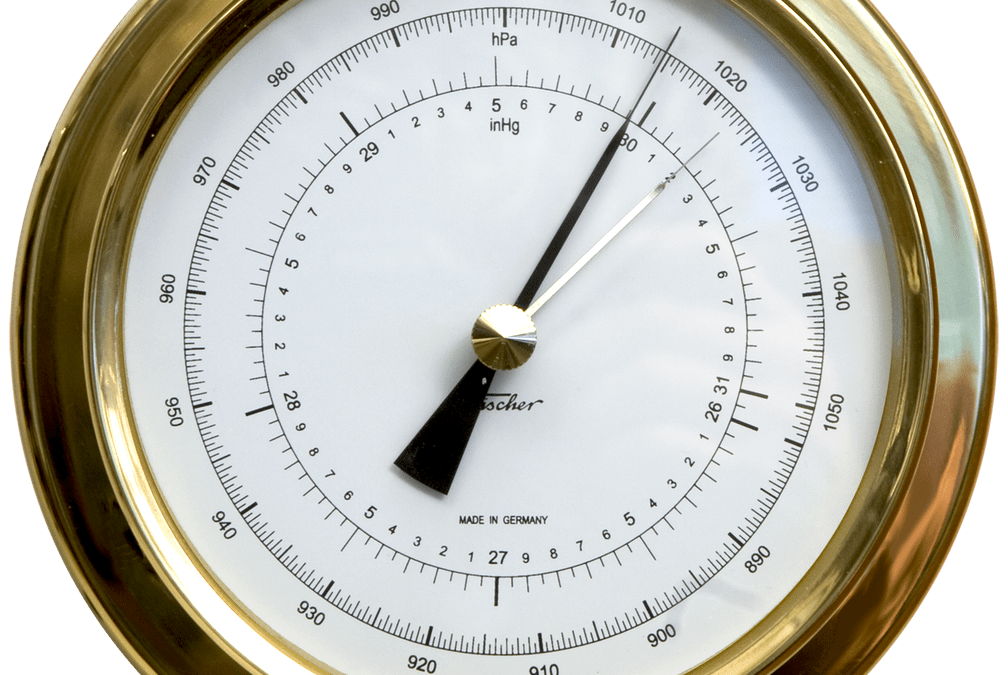Why don't we use local pressure?
For most applications, local pressure is corrected to sea level pressure. Why?

Most experienced observers know that barometric pressures are corrected to sea level. But why? Why not just use local pressure? Well, doing that could lead to some misleading conclusions.
Atmospheric pressure is the weight of a column of air directly above a point on the earth’s surface. The column of air above a sea level reporting station will record a pressure of approximately 14 pounds per square inch. A station at a high altitude, like Denver, has less atmosphere above it, so an air column will weigh less, resulting in much lower pressure. Vertical variations in such an air column will be on the order of 150 millibars (Mb) per mile.
Let’s take Hurricane Katrina from August 2005 as another example. At the storm’s peak, a pressure of 902 Mb was recorded. The standard pressure at sea level is 1013 Mb, so this is a very low barometric pressure. The lowest barometric pressure, according to the Guinness Book of Records, was 870 Mb recorded in the eye of Super Typhoon Tip near Guam in October 1979.
Now let’s look at an average barometric pressure recorded on June 8, 2021, at Colorado Springs Airport (KCOS), around 23.90 inches of mercury, or 809 millibars. This is called station pressure, or sometimes absolute pressure. That pressure reading would indicate that Colorado Springs was experiencing a hurricane but, of course, it was a beautiful sunny, breezy day. To eliminate these oddities, the National Weather Service corrects most references to barometric pressure to sea level; in other words, they’re leveling the playing field.
Colorado Springs Airport lies at an elevation of 6,186 feet. Taking our example above of a barometric pressure of 23.90 inches, we would add a correction of 6.22 inches from a standard table of corrections, yielding a sea level pressure of 30.12” or 1019.98 Mb. The conversion is not exact because of other factors such as temperature must be considered. This is of particular importance to airplane pilots. Entering 30.12” into their altimeter would cause the altimeter to read field elevation. Putting the actual station pressure into the altimeter would yield an erroneous reading near sea level, and we all know KCOS is nowhere near sea level.
You can also work in reverse and subtract the correction from sea level pressure to calculate the actual pressure at a location. Novalynx Corporation publishes a table of barometric corrections that is available here. There is also a calculator for converting inches of mercury to millibars and vice versa.
So, while knowing actual station pressure helps calculate things like density altitude, most pressure measurements are corrected to sea level to make things easier for everyone.
